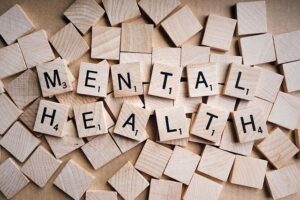Signs of Anxiety: When Worry Becomes a Problem
It’s perfectly normal to feel anxious before an exam, an important presentation, or a crucial decision. This occasional anxiety is a natural body reaction. However, when this state of alert becomes frequent, intense, and appears without an apparent reason, it may be a sign that anxiety has spiraled out of control and turned into something that needs attention. Recognizing the signs is the first step toward seeking balance.
Emotional and Behavioral Signs
Anxiety goes far beyond just feeling nervous. It manifests in our thoughts and actions in specific ways:
- Excessive and uncontrollable worry about various aspects of life, from big issues to small details.
- A constant feeling that something bad is about to happen, the so-called “catastrophic foreboding.”
- Irritability and agitation, feeling constantly on edge and having difficulty relaxing.
- Difficulty concentrating, as if the mind is always full or blank.
- Avoidance of places, situations, or people that trigger fear, progressively limiting social and professional life.
Physical Signs
Often, the body screams what the mind tries to silence. Anxiety activates the “fight or flight” system, releasing hormones that cause intense physical reactions:
- Racing heart, palpitations, or chest pain.
- Muscle tension, especially in the shoulders, neck, and jaw.
- Digestive problems, such as stomach pain, nausea, or diarrhea.
- Difficulty breathing or a feeling of tightness in the chest.
- Tremors, excessive sweating, and dizziness.
The Difference Between Normal and Pathological Anxiety
The line separating one from the other is defined by three main factors: intensity, duration, and impact on your quality of life. If the anxiety is so strong that it causes intense suffering, if it persists for weeks or months, and disrupts your work, studies, or relationships, it is a strong indication that it has become an anxiety disorder.
Identifying these signs in yourself or someone close to you can be alarming, but it is also a sign of hope. It means you can name the problem and, from there, seek solutions. Sharing this article can help spread knowledge and reduce stigma. The most important thing to remember is that anxiety is a treatable condition. Strategies like therapy, especially Cognitive-Behavioral Therapy, and in some cases psychiatric follow-up, are extremely effective in regaining control and peace of mind. Seeking professional help is an act of courage and self-care.






Publicar comentário